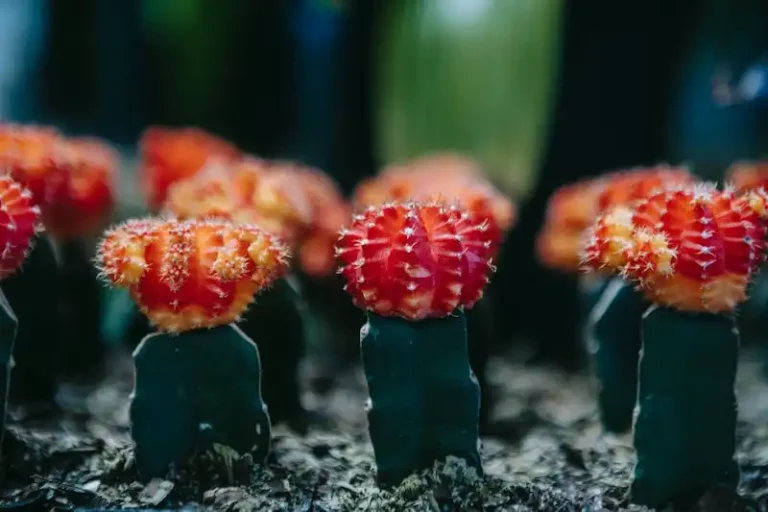Pak choi, also known as bok choy or Chinese cabbage, is a leafy green vegetable that is commonly used in Asian cuisine. It has a mild and slightly sweet flavor, making it a favorite in stir-fries, soups, and salads. This healthy and nutritious vegetable is packed with vitamins and minerals, making it a great addition to any meal.
When it comes to preparing pak choi, there are a few different ways you can cut it. One common method is to chop it into strips, crosswise or lengthwise, depending on the recipe. Another option is to separate the leaves from the stems and chop them into bite-sized pieces. Some recipes may call for the leaves and stems to be cooked separately, whereas others may require them to be cooked together.
To chop pak choi, start by washing it thoroughly to remove any dirt or grit. Then, use a sharp knife to cut off the bottom of the stems, which are often tough and fibrous. Next, slice the pak choi leaves vertically into thin strips or chop them into smaller pieces, depending on your preference. If you’re adding the stems, cut them into smaller pieces to ensure even cooking.
When cooking pak choi, it’s best to stir-fry it quickly over high heat to retain its crisp texture and sweet flavor. You can also roast it in the oven and then add it to stir-fries or soups. The smooth and tender texture of cooked pak choi adds a delicious umami flavor to various dishes.
If you’re shopping for pak choi, choose ones that have fresh, green leaves and firm stems. Avoid any that have yellowed or wilted greens. As for storage, pak choi can be kept in the refrigerator for up to a week. Just make sure to wrap it in a damp paper towel or store it in a plastic bag to keep it fresh.
In summary, pak choi is a versatile and delicious vegetable that can be used in a wide range of recipes. Whether you’re stir-frying, roasting, or adding it to soups and salads, the crunchy texture and mild taste of pak choi will help enhance the flavor of any dish. So, next time you’re in the market, be sure to pick up some pak choi and give it a try!
FAQ:
- How do you cut pak choi?
- What is the best way to cook pak choi?
- How do you store pak choi?
- Can I eat pak choi raw?
How to prepare Bok Choy for Stir Fry
When it comes to preparing Bok Choy for stir fry, there are a few key steps to follow. Whether you’re a seasoned cook or just starting to explore the world of Asian cuisine, these tips will ensure that your Bok Choy is flavorful and tender every time.
- Choose fresh Bok Choy: Always select Bok Choy heads that are firm and have crisp, green leaves. Avoid any heads with wilted or discolored leaves.
- Wash the Bok Choy: Before you start, make sure to wash the Bok Choy thoroughly to remove any dirt or sand that may be clinging to the leaves. Gently pat dry with a clean towel or paper towels.
- Cut the Bok Choy: Start by slicing off the stem of the Bok Choy, as it has a tougher texture than the greens. Set the stems aside for later use in soups or salads. Then, slice the leafy greens crosswise into bite-sized pieces.
- Prepare the Bok Choy: If you want to add more flavor to the Bok Choy, you can also slice it lengthwise (vertically) to create long, thin strips. This will give the Bok Choy a more textured and visually appealing appearance.
- Cook the Bok Choy: When stir-frying the Bok Choy, start by heating some oil in a pan over medium-high heat. Add the Bok Choy and stir-fry for about 2-3 minutes, or until it becomes tender and vibrant green in color. Be careful not to overcook, as Bok Choy can quickly become mushy.
- Season to taste: Once the Bok Choy is cooked, you can season it with your favorite stir-fry sauce or simply sprinkle some salt and pepper for a more simple taste. Bok Choy has a naturally sweet and slightly bitter flavor, so it pairs well with a wide range of seasonings.
- Suggestions for use: Prepared Bok Choy is a versatile ingredient that can be used in a variety of dishes. You can add it to stir-fries, soups, or salads. It also makes a great side dish when lightly roasted or sautéed with garlic and soy sauce. The possibilities are endless!
- Storage: If you have any leftover prepared Bok Choy, it can be stored in an airtight container in the refrigerator for up to 3-4 days. However, it’s always best to use it fresh for optimal taste and texture.
By following these simple steps, you can easily prepare Bok Choy for stir fry and enjoy its healthy and delicious flavors. So, next time you’re at the market, don’t hesitate to grab a few heads of Bok Choy and give this popular Asian vegetable a try!
What is Bok Choy
Bok choy, also known as pak choi or Chinese cabbage, is a leafy green vegetable that is commonly used in various Asian dishes. It is a member of the cabbage family and has thick, crisp stems and smooth, dark green leaves.
When it comes to preparing bok choy, there are several ways to cut it, depending on the dish you are making. You can slice it lengthwise vertically to create long strips, or you can halve it and then chop it into quarters. The way you cut the bok choy depends on how you plan to cook it.
Bok choy can be stir-fried, added to soups, or even roasted. If you’re stir-frying or adding it to a soup, we recommend slicing it into thin strips. This will help it cook quickly and evenly, while still maintaining its crisp texture.
When you’re selecting bok choy at the markets, choose ones with firm, crisp stems and bright green leaves. Avoid wilted or discolored bok choy. Before preparing bok choy, make sure to clean it well. Rinse it under cold water and remove any dirt or sand that may be on the leaves.
In terms of nutrition, bok choy is a nutritious vegetable that is low in calories but high in vitamins A and C. It also contains calcium and iron, making it a great addition to your favorite dishes.
Overall, bok choy is a versatile vegetable that can be used in a variety of ways. Whether you’re stir-frying it, adding it to a soup, or using it in salads, bok choy is sure to add a fresh and flavorful element to your dishes.
For a quick storage guide, it is recommended to keep bok choy in the refrigerator. Store it in a plastic bag or container to keep it fresh for up to a week.
If you have any more questions about bok choy or need more information on how to cut it, check out our FAQ section below for more tips and answers to common questions.
What does Bok Choy taste like
The taste of Bok Choy, also known as Pak Choi, can vary depending on how it’s prepared and cooked. It is a mild and slightly sweet vegetable with a subtle cabbage-like flavor.
When raw, Bok Choy has a crisp and refreshing texture, similar to that of celery. The leaves have a mild, green taste, while the stem is crunchy and has a slight bitterness to it.
When cooked, Bok Choy becomes tender, and its flavors become more pronounced. It takes on a slightly nutty taste, with a hint of sweetness. The leaves become wilted and soft, while the stem retains some crunchiness.
Bok Choy is a versatile vegetable that can be used in various dishes. It is commonly used in stir-fries, soups, salads, and roasted or grilled dishes. Its mild flavor allows it to pair well with different seasonings and sauces, making it a popular choice for many recipes.
When preparing Bok Choy, it is recommended to wash and clean the vegetable thoroughly. Cut off the bottom of the stem and separate the leaves. The leaves can be left whole or chopped into smaller pieces. The stem can be halved lengthwise or sliced crosswise into strips.
To store Bok Choy, wrap it in a damp paper towel and place it in a plastic bag in the refrigerator. It will stay fresh for up to a week.
In summary, Bok Choy has a delicate taste that is both mild and slightly sweet. It can be enjoyed raw in salads or cooked in various dishes. Its versatility, nutrient-rich profile, and pleasant taste make it a popular choice among those who enjoy healthy and flavorful vegetables.
| Ways to serve Bok Choy: | How to prepare Bok Choy for stir-frying: | Storage and cleaning tips for Bok Choy: |
|---|---|---|
| – Add it to stir-fries, soups, or salads | – Wash the leaves and separate them from the stems | – Store Bok Choy in the refrigerator, wrapped in a damp paper towel and placed in a plastic bag |
| – Roast or grill it for a crunchy texture | – Cut off the bottom of the stem | – Clean Bok Choy thoroughly by rinsing it under cold water |
| – Use it as a side dish or incorporate it into stir-fries with meat or other vegetables | – Chop the leaves or slice the stem according to your preference | – Avoid storing Bok Choy near fruits that release ethylene gas, as it can speed up the ripening process |
Overall, Bok Choy is a healthy and flavorful vegetable that can be enjoyed in numerous ways. Whether you’re a fan of crunchy greens or prefer them cooked until tender, Bok Choy is a fantastic addition to any dish.
Is Bok Choy Healthy?
Bok choy, also known as pak choy, is a nutritious and versatile vegetable that can be enjoyed in a variety of ways. It is a member of the cabbage family and has long green leaves with a little white stem. Being low in calories and packed with nutrients, it is a popular choice for being a healthy addition to any meal.
When preparing bok choy, it is important to know what to look for and how to cut it properly. Bok choy can be cooked or eaten raw, and its flavor can vary depending on how it is prepared. It is commonly used in stir-frying and can also be grilled, roasted, or added to soups and salads.
Bok choy is best when it is crisp and fresh. Look for bright green leaves and firm stems without any wilted or yellow spots. If you are unsure on how to choose the best bok choy, your local markets can guide you and answer any questions you may have.
When cutting bok choy, start by washing it well to remove any dirt or debris. Cut off the root end and separate the leaves from the stem. The stem can be cut into strips or chopped, while the leaves can be cooked whole or sliced into smaller pieces. Keep in mind that the stems may take longer to cook than the leaves, so it is recommended to separate them when preparing dishes.
Bok choy can be cooked in various ways, such as stir-frying or adding it to soups and stews. It has a mild and slightly sweet flavor, which can be enhanced by adding other ingredients like garlic, ginger, or soy sauce. Bok choy is also a great addition to salads, providing a crunchy and textured element.
In terms of nutrition, bok choy is rich in vitamins A, C, and K, as well as calcium and potassium. It is low in calories and high in fiber, making it a nutritious choice for those looking to maintain a healthy diet. Bok choy is also a good source of antioxidants that help protect the body against damage from free radicals.
To store bok choy, wrap it in a damp paper towel and place it in a plastic bag in the refrigerator. It should stay fresh for up to a week. Before cooking or serving, make sure to wash the bok choy again to remove any remaining dirt or grit.
Overall, bok choy is a healthy and delicious vegetable that adds flavor and nutrition to a variety of dishes. Whether you choose to stir-fry it with some beef or add it to a salad, bok choy is a versatile ingredient that can be enjoyed in many ways.



